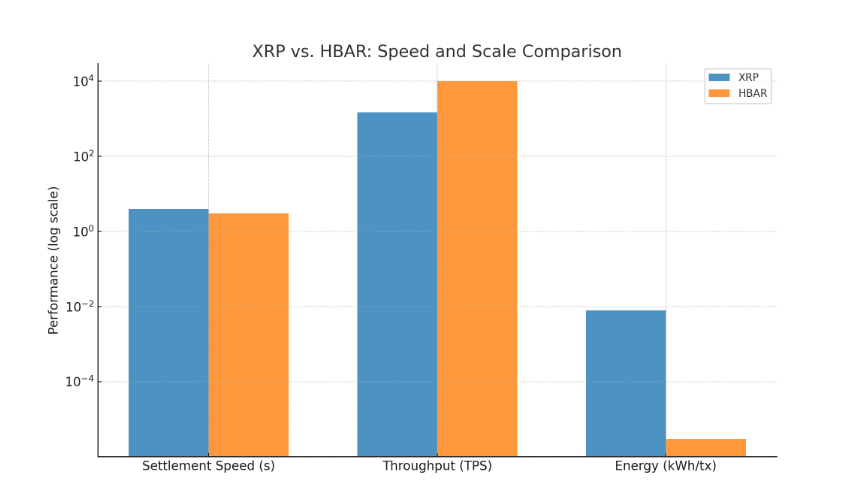SWIFT on-chain experiment: Who will seize the future of cross-border payments, XRP or HBAR?
Global payment giant #Swift is conducting a real-time test based on blockchain technology, sparking a new wave of interest in altcoins. The key players in this test are Ripple ( #xrp ) and Hedera Hashgraph ( #hbar ), both of which have performed outstandingly in terms of speed, scalability, and application potential 📈.
SWIFT processes over $150 trillion in transactions annually 💰, even moving a small portion to blockchain could significantly boost demand in the crypto market, especially for XRP and HBAR.
🚀 XRP and HBAR: SWIFT's 'Blockchain Pioneers'
This test shows that XRP and HBAR are strong candidates for driving cross-border payments and asset tokenization.
XRP: Known for its instant settlement and liquidity bridging capabilities, particularly favored by banks.
HBAR: Renowned for high transaction throughput and enterprise-grade governance capabilities, suitable for enterprise applications and tokenization deployment.
The core goal of the test is to seamlessly integrate traditional bank payment information with blockchain infrastructure, making cross-border transfers faster, cheaper, and more transparent 💡.
If SWIFT handles $150 trillion in transaction volume annually, even a small portion completed via blockchain could redefine the entire market landscape. For XRP, this means more banks and payment service providers may adopt it as a liquidity bridge. For HBAR, it means further opportunities for enterprise-level tokenization applications 📊.
⚡ Technical comparison: XRP vs HBAR
Core advantages of XRP

XRP is characterized by fast settlement and strong liquidity, making it very suitable for banks and payment institutions as a bridging asset. Its consensus mechanism based on the Ripple Protocol (RPCA) allows for faster transaction speeds, lower costs, and significantly lower energy consumption compared to traditional financial systems ⚡.
Core advantages of HBAR
Consensus time: About 3 seconds
Processing capacity: Over 10,000 TPS, can be further scaled through sharding
Energy consumption: About 0.000003 kWh per transaction, achieving carbon-negative emissions 🌱
Governance: A governance committee composed of 39 members, including tech giants like Google and IBM
Use cases: Tokenized assets, enterprise applications
Adoption cases: Large enterprises like Google and Boeing
The core highlights of HBAR are its scalability and green low-energy characteristics, making it very suitable for enterprises to deploy large-scale tokenization solutions. At the same time, the 'Gossip + virtual voting (aBFT)' consensus mechanism ensures a balance between network security and high efficiency 💎.
💡 Market potential and investment insights
XRP
What banks are most concerned about is its instant settlement and liquidity management capabilities
If SWIFT moves some transactions to blockchain, the actual usage of XRP may increase significantly
For investors, this is a potential signal of demand from the banking side, and market attention may continue to rise 📈
HBAR
Enterprise applications and tokenized assets are its biggest selling points
The participation of large tech companies and enterprises gives HBAR a first-mover advantage in the enterprise market
Investors can focus on enterprise-level collaborations and the implementation of applications to assess long-term potential 💼
Overall, SWIFT's experiment is not only an exploration of technological innovation but also a validation of market demand for XRP and HBAR. In the short term, such news may trigger volatility, but in the long term, what truly drives prices and applications is actual implementation and sustained adoption by banks and enterprises 📌.
🌟 Summary
SWIFT is testing a blockchain-based real-time payment system, with XRP and HBAR as leading competitors
XRP is known for its fast settlement speed and strong liquidity, with high adoption rates among banks
HBAR has high throughput, green low energy consumption, and enterprise governance advantages, suitable for tokenization applications
Even if SWIFT only moves a small number of transactions, it could drive market demand growth
Investors need to pay attention to implementation rather than just market speculation

